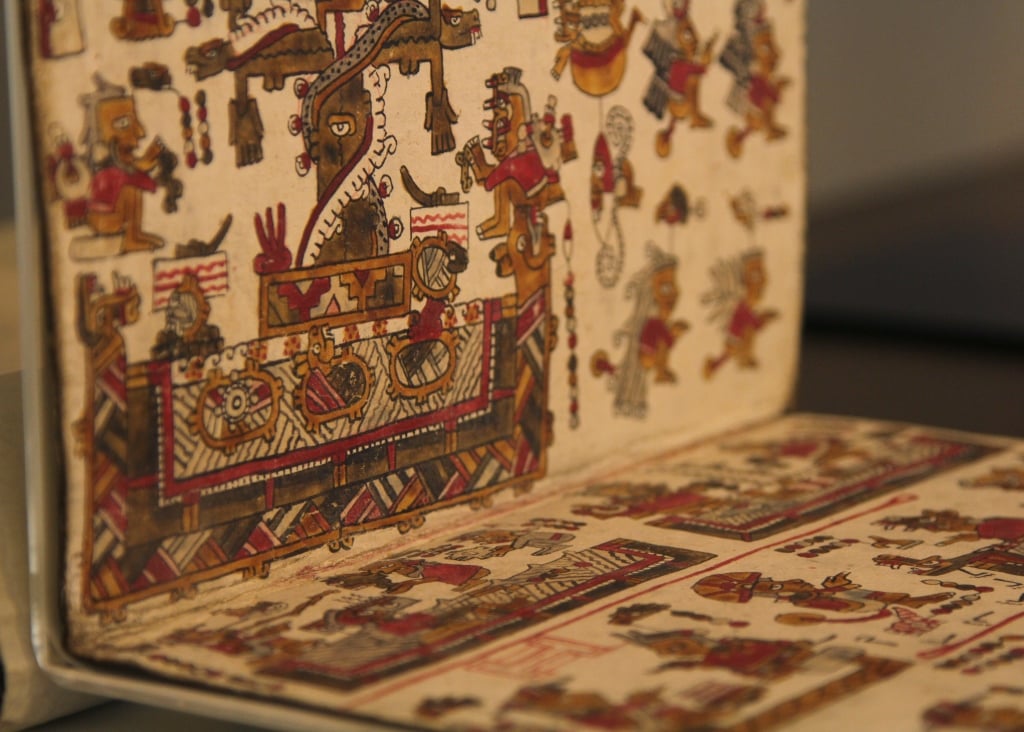
A message from pre-colonial Mexico has been revealed by researchers, reports the Daily Mail. Through hyperspectral imaging, they have uncovered hidden information on the back of a rare Mixtec manuscript, circa 1560, from what is now the Oaxaca region of Mexico.
The newly-discovered Codex Selden was covered by a coating of gesso, a plaster made of gypsum and chalk. The 16-foot-long document folds up into 20 pages, each filled with a complex system of pictures and symbols.
The hidden Mexican codex revealed. Courtesy of the Bodleian Libraries/University of Oxford © Journal of Archeological Science: Reports, 2016 Elsevier.
“After four or five years of trying different techniques, we’ve been able to reveal an abundance of images without damaging this extremely vulnerable item,” said Leiden University researcher Ludo Snijders in a statement.
He confirmed long-held suspicions that the codex is a palimpsest, a document that has been covered and reused to make a new manuscript. In the 1950s, earlier, invasive testing had scraped away part of the plaster on one page, revealing signs of the hidden document below.
Two pages of the rediscovered codex, and a reconstruction of the faint images revealed by researchers. Courtesy of the Universiteit Leiden.
Earlier attempts to unlock the mysteries of the Codex Selden without damaging the delicate artifact were stymied by the organic paints used in its creation, which don’t absorb the x-rays needed in order to study it.
“Hyperspectral imaging has shown great promise in helping us to begin to reconstruct the story of the hidden codex and ultimately to recover new information about Mixtec history and archaeology,” said David Howell, head of heritage science at the Bodleian Libraries, which owns the codex, noting that “this is very much a new technique.”
Researchers are now working to interpret the newly-discovered pictographs. Their findings are published in the Journal of Archaeological Sciences.